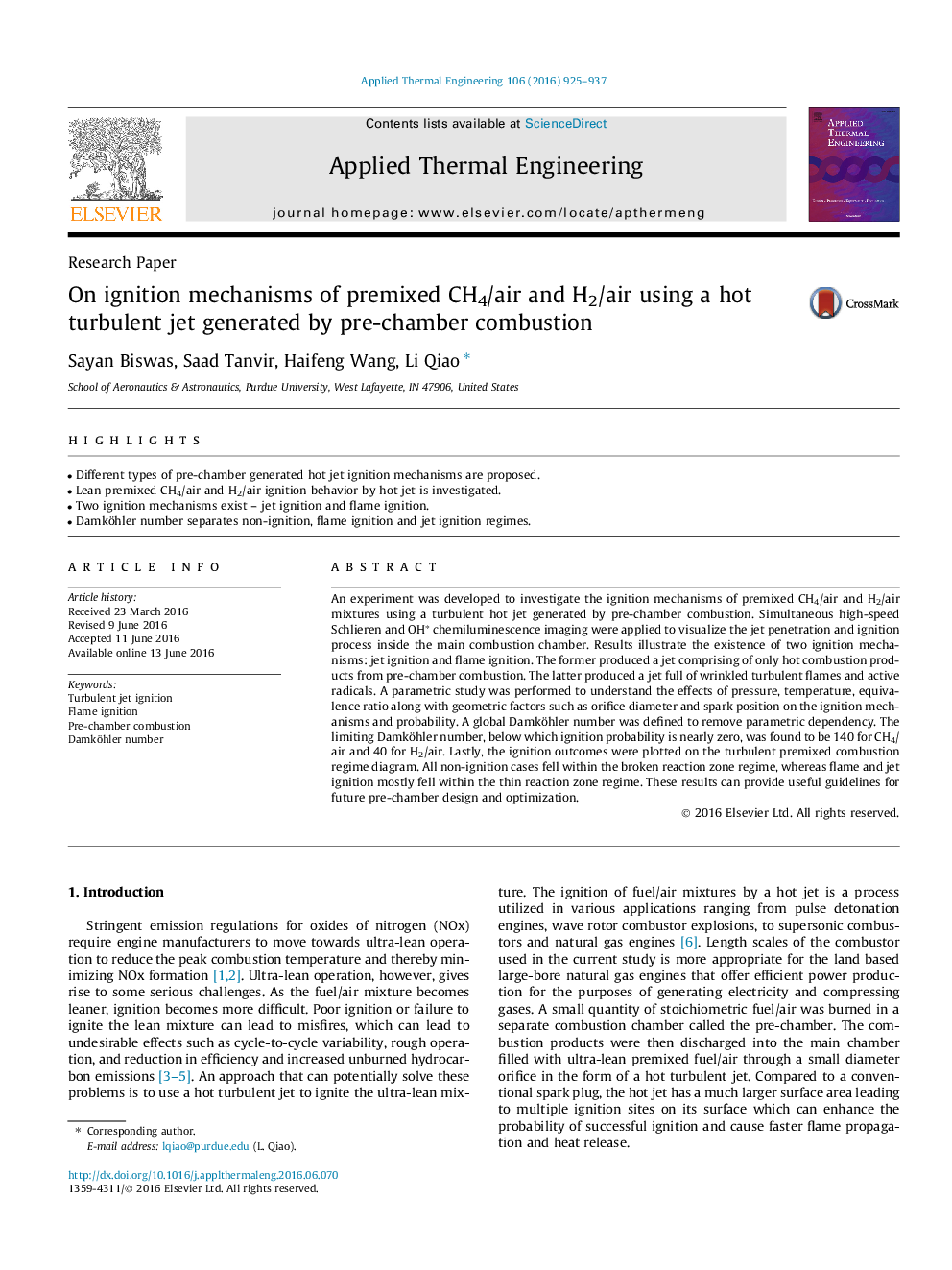| کد مقاله | کد نشریه | سال انتشار | مقاله انگلیسی | نسخه تمام متن |
|---|---|---|---|---|
| 7047488 | 1457122 | 2016 | 13 صفحه PDF | دانلود رایگان |
عنوان انگلیسی مقاله ISI
On ignition mechanisms of premixed CH4/air and H2/air using a hot turbulent jet generated by pre-chamber combustion
دانلود مقاله + سفارش ترجمه
دانلود مقاله ISI انگلیسی
رایگان برای ایرانیان
موضوعات مرتبط
مهندسی و علوم پایه
مهندسی شیمی
جریان سیال و فرایندهای انتقال
پیش نمایش صفحه اول مقاله

چکیده انگلیسی
An experiment was developed to investigate the ignition mechanisms of premixed CH4/air and H2/air mixtures using a turbulent hot jet generated by pre-chamber combustion. Simultaneous high-speed Schlieren and OHâ chemiluminescence imaging were applied to visualize the jet penetration and ignition process inside the main combustion chamber. Results illustrate the existence of two ignition mechanisms: jet ignition and flame ignition. The former produced a jet comprising of only hot combustion products from pre-chamber combustion. The latter produced a jet full of wrinkled turbulent flames and active radicals. A parametric study was performed to understand the effects of pressure, temperature, equivalence ratio along with geometric factors such as orifice diameter and spark position on the ignition mechanisms and probability. A global Damköhler number was defined to remove parametric dependency. The limiting Damköhler number, below which ignition probability is nearly zero, was found to be 140 for CH4/air and 40 for H2/air. Lastly, the ignition outcomes were plotted on the turbulent premixed combustion regime diagram. All non-ignition cases fell within the broken reaction zone regime, whereas flame and jet ignition mostly fell within the thin reaction zone regime. These results can provide useful guidelines for future pre-chamber design and optimization.
ناشر
Database: Elsevier - ScienceDirect (ساینس دایرکت)
Journal: Applied Thermal Engineering - Volume 106, 5 August 2016, Pages 925-937
Journal: Applied Thermal Engineering - Volume 106, 5 August 2016, Pages 925-937
نویسندگان
Sayan Biswas, Saad Tanvir, Haifeng Wang, Li Qiao,